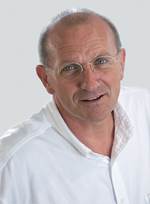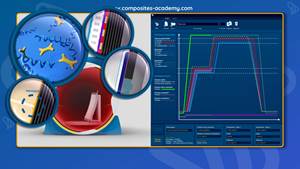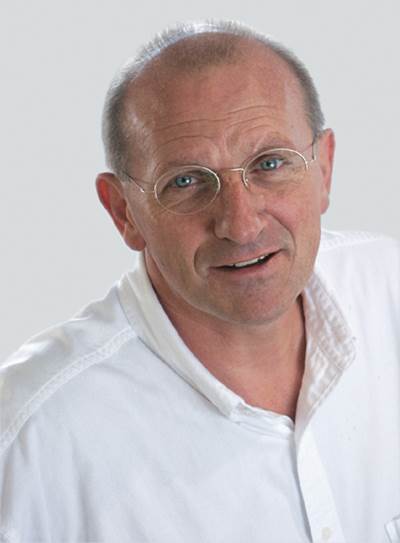Composites: Past, Present and Future: Marine Composites Training and Education, Part II
Last issue, in Part I, Andre Cocquyt identified the dire need for technical training in marine composites. In Part 2, he outlines a plan that could meet that need.
Share
Read Next
Last issue, I outlined a problem: There still is a dire lack of technical training available to most molders of marine composites. But what is the solution? At the outset, let me say that the American Composites Manufacturers Assn.’s (ACMA) CCT (Certified Composites Technician) program, I believe, has done a great job of creating training tools, such as manuals and videos. ACMA’s CCT program has become a de facto national standard and is a great certification tool. But the CCT program involves a bit of a Catch-22: It assumes that each candidate is employed in a situation where he/she can gain hands-on experience. Therefore, it is possible to become a CCT or CCT I (Instructor) without setting foot on a shop floor because no hands-on testing is required for certification. ACMA is aware of this, yet there is only so much that a trade association can or should do. Writing curricula and organizing hands-on training is expensive and beyond the scope of any association. Further, any time an entire industry has to rely on expensive private training or vendor assistance, something is amiss. Technical education belongs in accredited educational institutions.
On that front, I believe this industry is about to witness a major breakthrough. Thanks to an exceptional alignment of stars and planets, we have been given the chance to create a transferable model for composites training called The Initiative. It started when the state of Maine obtained one of 13 WIRED Grants last year, and Maine’s state government declared composites a statewide growth priority. A team was formed and additional monies were obtained via a U.S. Department of Labor (DOL) grant. As a result, an unusual alliance is working hard to create formal curricula and Certifications for Composites Training. The alliance consists of government entities, such as the North Star Alliance Initiative (NSAI) and the Department of Economic and Community Development (DECD); educational institutes, such as the University of Maine (UM) and Portland-based Southern Maine Community College (SMCC); private trainers, such as The Landing School, Abaris Training and my own GRPguru; and associations, such as the Maine Boat Building Assn. (MBBA), Maine Composites Alliance (MCA) and the ACMA.
The first thing we needed was a good home, and we found that in Brunswick, Maine: a 28,000-ft² (2,600m²) building that once housed a local newspaper was just about perfect. The Town of Brunswick stepped up and contributed $1 million (USD) for renovation and, today, the Advanced Technology Center (ATC) has classrooms, a 16-station computer lab, hands-on labs for closed molding and aircraft repair training, a spray booth, a wet layup zone and a support area for precision manufacturing, which will house CNC routers, a Bridgeport mill, welding equipment and all that is needed in an A-to-Z infrastructure for curriculum development and training. In addition, the Landing School is getting a new building ready to deliver a 10-month curriculum for composites shop supervisors, and the University of Maine is writing a new standard for QA/QC testing.
The ultimate goal of The Initiative is to create a two-year Science Degree in Composites, and the educational leadership in our group has set things in motion for accreditation. The focus is on closed molding and automation because we believe strongly that this is the only way for the U.S. composites industry to compete successfully with emerging composites markets abroad. But we recognize that open molding won’t soon vanish, and the program will address that as well. Lest this appear to be self-promotion, let me say that my role in The Initiative is temporary. At the end of next year, I will hand over my curricula to the ultimate owners — the community college system, the DOL and the ACMA.
With the federal funding behind it, the ATC is a repeatable blueprint that could be used in any U.S. state or region. I think there’s a need for seven to 10 similar centers. I am aware of only four that could take on the complete curriculum: ATC and Cerritos College (Norwalk, Calif.) are well established. Skagit Valley Community College (SVCC) is on track and will get better when its new facility opens in Anacortes, Wash. And MARTEC (Marine Technology Center) in Moorhead City, N.C., has a ready-to-use facility with complete infrastructure and lacks only a staff. (If I’ve left potential centers out, my apologies — I’d love to hear from them.) These could and should be just the beginning.
We have a unique opportunity to create a uniform, nationwide curriculum and deliver accredited degrees. The composites industry now needs to do its part: Upgrade its “best practice for composites” standards and send its employees to school.
Next issue: In Part 3, the author gives advice on how to acquire and effectively implement funding for large-scale training programs.
Related Content
Winona State, IACMI invest in composites workforce development
First composites hub in the IACMI-managed ACE national training program funds free bootcamps to equip students and community with hands-on composites skills, knowledge.
Read MoreAltair, NIAR sign MOU to build aerospace innovation space
Collaboration will expand digital twin adoption, empower aerospace startups and speed up product development and certification processes.
Read MoreNew online training course targets prepreg basics
JEC World 2024: Composites Expert highlights how its E-Learning Composites Academy platform supports flexible industry learning with new courses developed with Stelia Aerospace North America.
Read MoreDaher inaugurates Learning Center for training aeronautical talent
Daher offers a concrete solution to the shortage of qualified professionals in aerospace, providing a range of technical programs that prepare workers for the sector’s rigorous demands.
Read MoreRead Next
Composites: Past, Present and Future: Marine Composites Training and Education, Part I
In Part I of a series about the past, present and future of training in marine composites, Andre Cocquyt outlines the historical difficulty composites manufacturers have had in finding qualified technicians, and how that reality led to his involvement in the development of training programs.
Read MoreComposites: Past, Present and Future: Marine Composites Training and Education, Part III
In Parts 1 and 2, Andre Cocquyt outlined the difficulty that composites manufacturers have faced in finding skilled employees and described a transferable model for local/regional training programs. In Part 3, he discusses the critical issue of program funding.
Read MoreNext-gen fan blades: Hybrid twin RTM, printed sensors, laser shock disassembly
MORPHO project demonstrates blade with 20% faster RTM cure cycle, uses AI-based monitoring for improved maintenance/life cycle management and proves laser shock disassembly for recycling.
Read More






